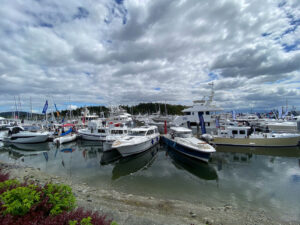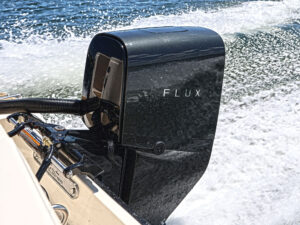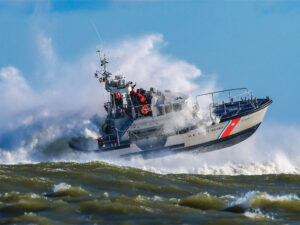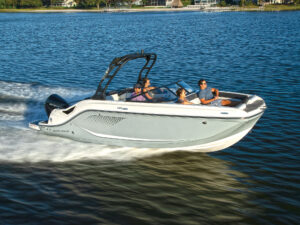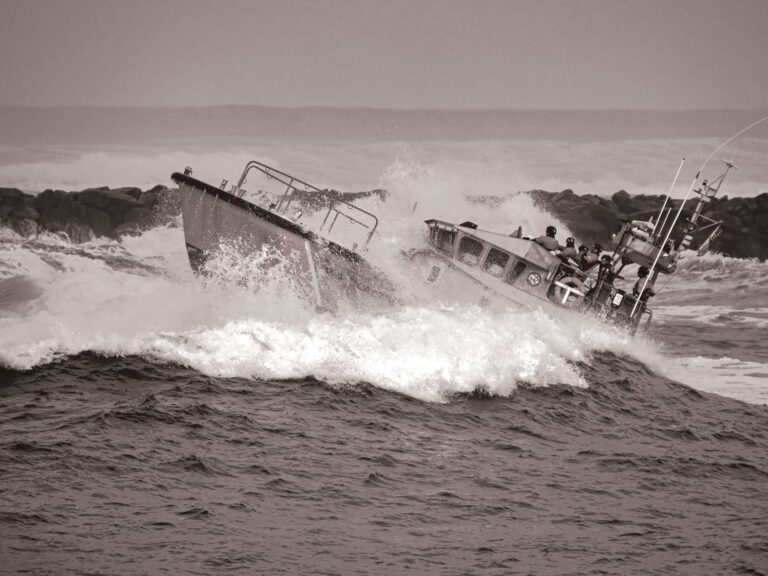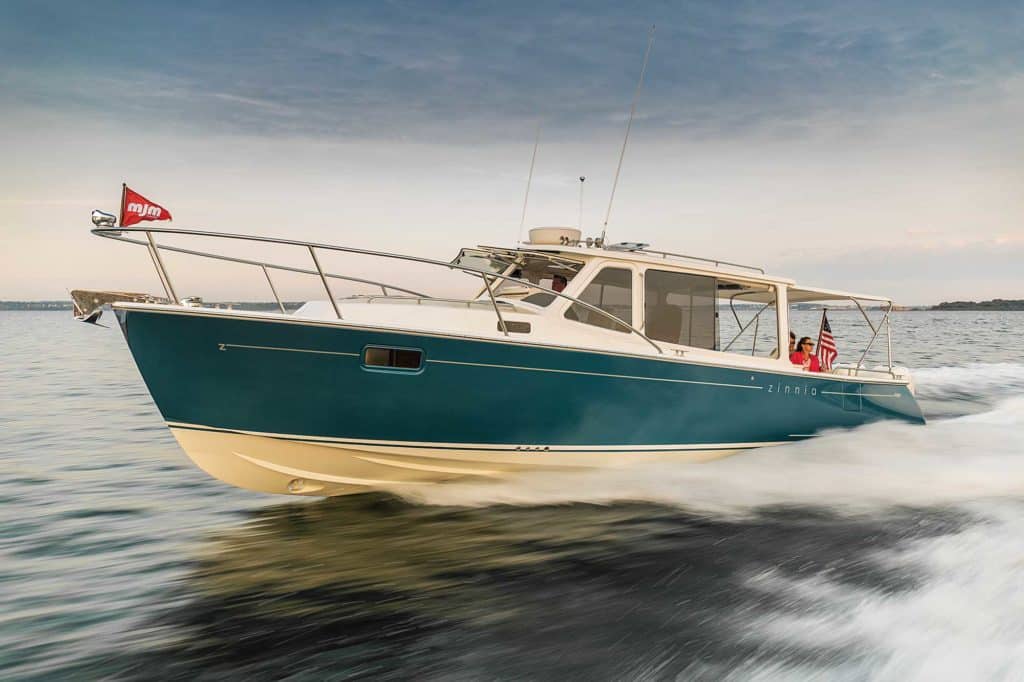
My boat test and factory inspection prove that the MJM Yachts 35z performs well, features a robust build, and its self-touted “eco-friendly” moniker has merit. Further, it impressed me with numerous small details, the likes of which make it obvious they were conceived and executed by those with major sea time.
Conceptualized and overseen by Bob Johnstone of J/Boats fame, designed in collaboration with naval architect Doug Zurn, and built in collaboration with Boston Boatworks, the MJM 35z’s basic laminate is created using wet pre-impregnated epoxy composite, a technique at the heart of the boat’s mission statement. The “wet pre-preg” process uses less resin to achieve higher strength and stiffness at a lighter weight to comparable structures made with other systems. Along with the use of high-tech coring materials, which further reduce weight, the 35z has a 3.5-to-1 length-to-beam ratio, versus the typical 2.7- or 3.0-to-1 ratios, for a slipperier, smoother ride, since weight and drag are primary factors in fuel efficiency and performance for better use of resources (and boating dollars). Plus, since epoxy does not outgas styrene, the 35z’s lamination process is more environmentally friendly than other methods.
How did it perform on the water?
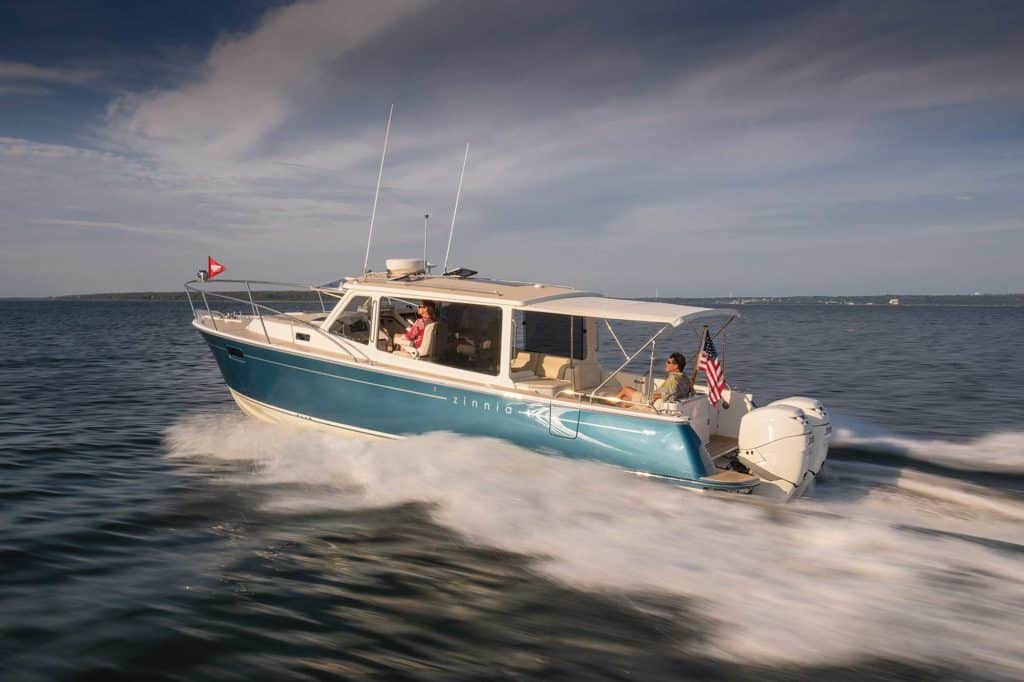
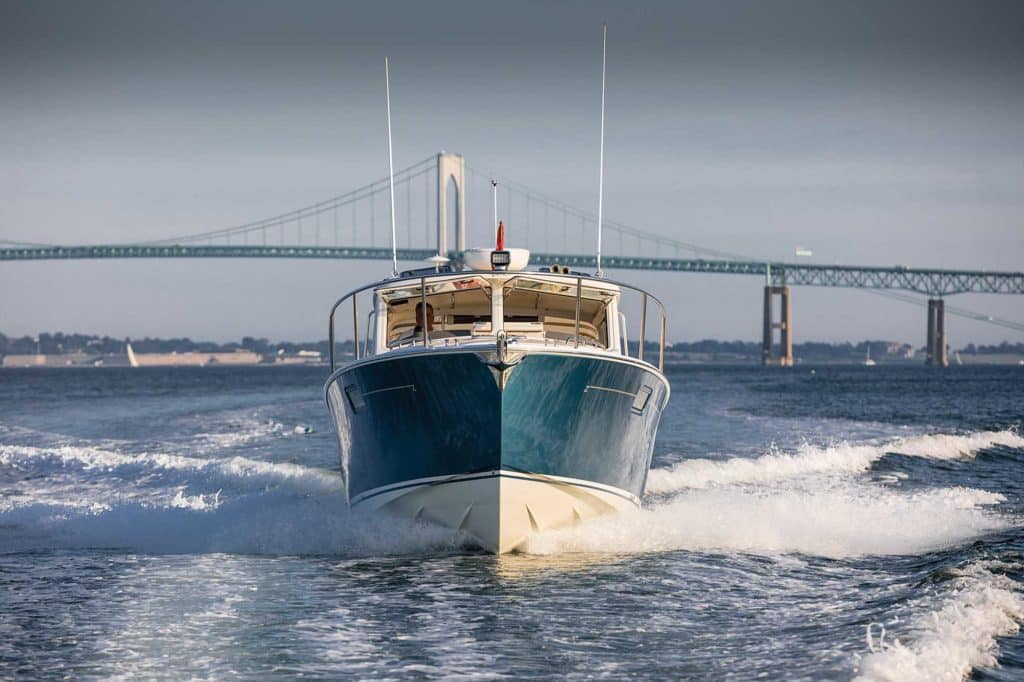
Hit the throttle and twin 300 hp Mercury Verado outboards make the 35z jump. While I noted a top speed of 46 mph, what impressed me was the way the boat ran at a 34 mph cruising speed in the moderate chop of test day. Crew comfort was high, fuel burn and sound levels proved low, and vibration and fumes were undetectable. The 35z nets 1 mpg at this speed. If the rising seas lead to slowing down, we recorded similar economy at 16, 20 and 26 mph. Plus, I discovered the boat maintains plane at 15 mph. These attributes provide plenty of options without foregoing economy when sea conditions change. Notably, the 35z’s length-to-beam ratio, which makes it narrower for its length than many other boats, pays off tangibly in seakindliness and handling that speak for themselves.
Handling proved able using the classic, teak-rimmed destroyer wheel and basic controls. But that’s just a baseline. The MJM 35z is offered with a Seakeeper gyro. Hit the switch and the boat simply will not rock and roll. Furthermore, the Active Trim and Auto Tab features allow the skipper who’s busy with crew and navigation to “set it and forget it” with respect to these controls. Manual override is available, of course, but I couldn’t better the auto systems myself. See if you can during your test ride. Likewise, Skyhook GPS station-keeping is standard.
The 35z is also equipped with Mercury’s Joystick Piloting complementing the basic wheel and throttle. With the joystick, I found the 35z could be made to maneuver in a highly precise and incremental manner around the dock. It can even be made to slide sideways, if needed. A joystick is a great additional tool for any captain to have at hand.
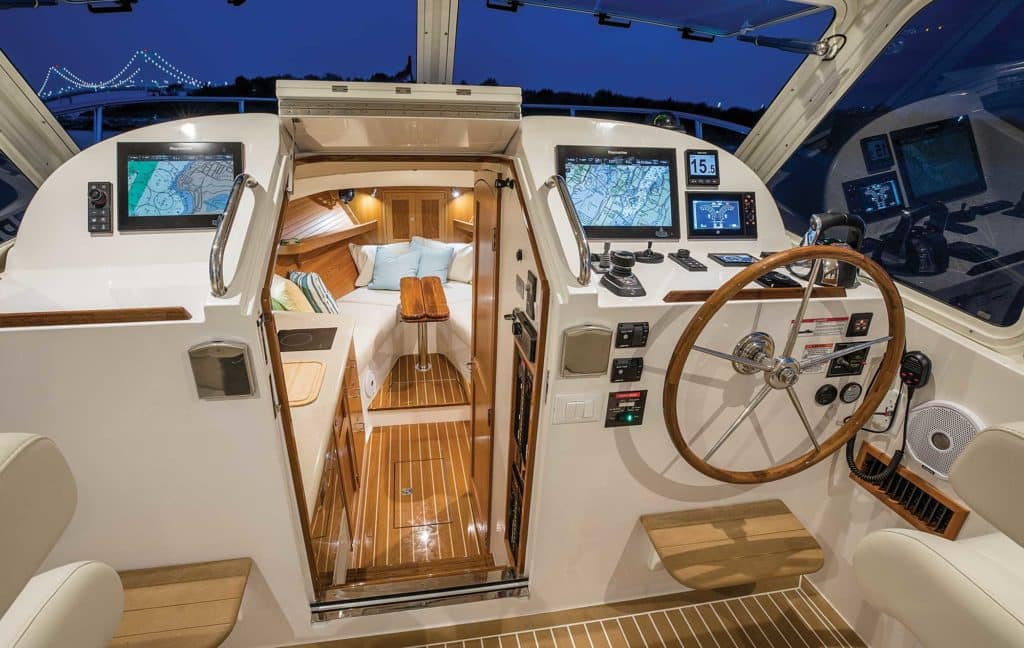
The helm itself is a broad, flat expanse housing an array of big-screen electronics, gauges and switches. As much as I trust electronics, I was glad to see the compass atop the helm, since I prefer to steer by compass rather than icon. (Plus, a compass needs neither power nor software updates to work.) I also liked that the spring-line cleats were in reach from the helm, since the ability to get a line on while still at the controls is a big plus when single-handing a boat. In fact, I found that with the canvas rolled up, I could get out onto the side deck and up to the bow directly from the helm — another plus for skippers who run solo. Naturally, access to the stern from the helm is lickety-split thanks to the open, single-level layout of the MJM 35z.
This layout delivers the room of a larger vessel. It features a hardtop with two deck hatches, electric-opening windshields and Strataglass side curtains. Drop curtains seal off the helm deck from the cockpit, making a weathertight, air-conditioned space that also serves for entertaining, lounging away a rainy day in port, or creating a twin berth stateroom for guests. A Bimini top extends aft of this to protect the cockpit proper from sun and rain. Twin transom doors provide great engine access and access to the water.
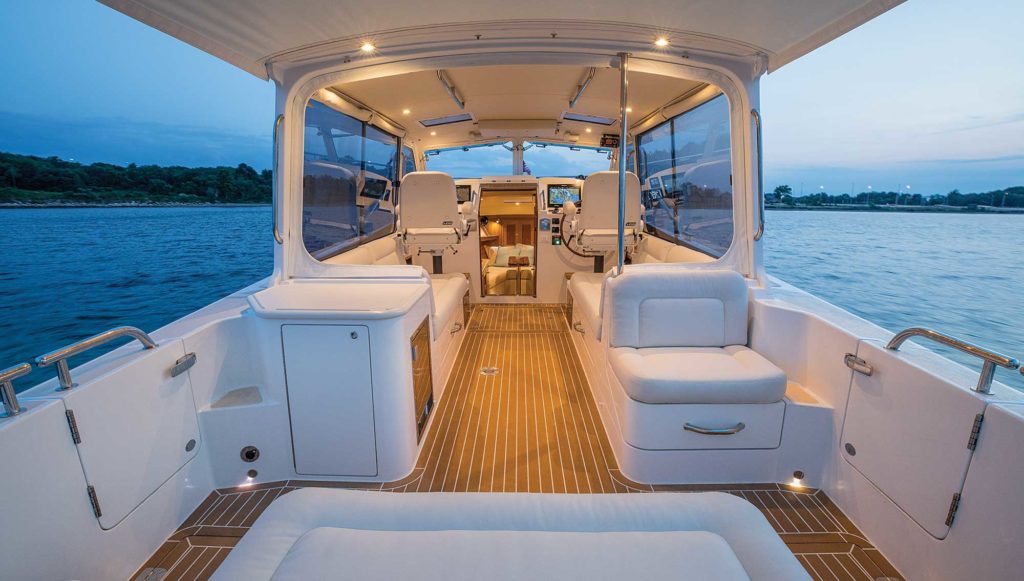
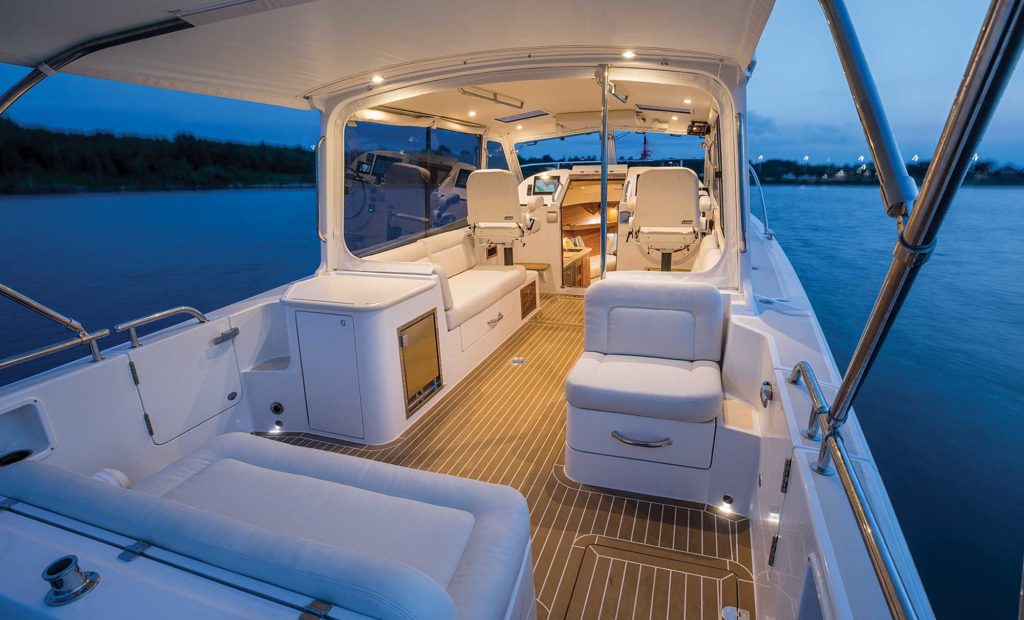
Belowdecks, the cabin features a galley, an enclosed head and a V-berth. A movable table is provided. I appreciated the keeper rails installed on stowage shelves that inhibit items from sliding off. The hull sides are sealed in slatted cherry, and the sole is teak and holly. All very yachtlike, although, thanks to modern coatings, the owner need not schedule annual varnishing.
Shopping against this boat will be difficult because the combination of high beam-to-length ratio, construction method and details makes it rather unique. That said, check out the Back Cove 34O, a new Downeast cruiser offered with twin 300 hp Yamaha outboards as standard power ($340,000 base price).
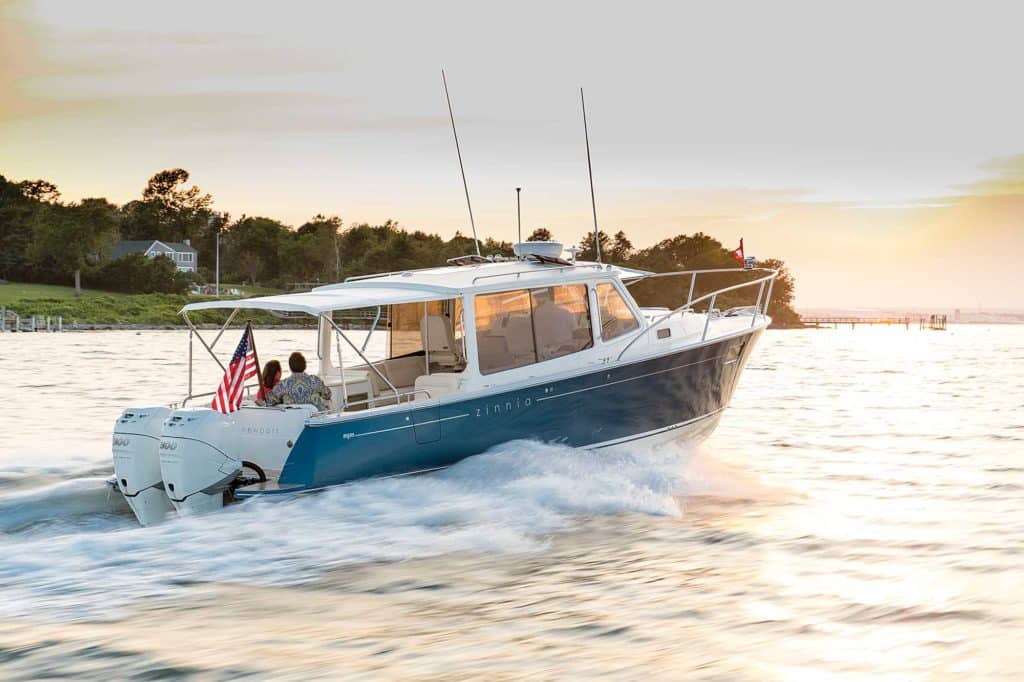
High Points
- Ease of operation is built in: spring-cleat placement, joystick control, secure bow access and more.
- Excellent performance, with low sound levels and no discernible fumes or vibration.
- Eco-friendly(ier) in build and in use.
Low Points
- Rod holders, if not capped, drain into the stowage compartment/seat module rather than onto the self-bailing cockpit sole.
- There are fiddle rails/keepers at the helm and atop the lockers but, ironically, none are installed on the cabin galley counter.
Price: $630,000 (with test power)
Available Power: Outboard
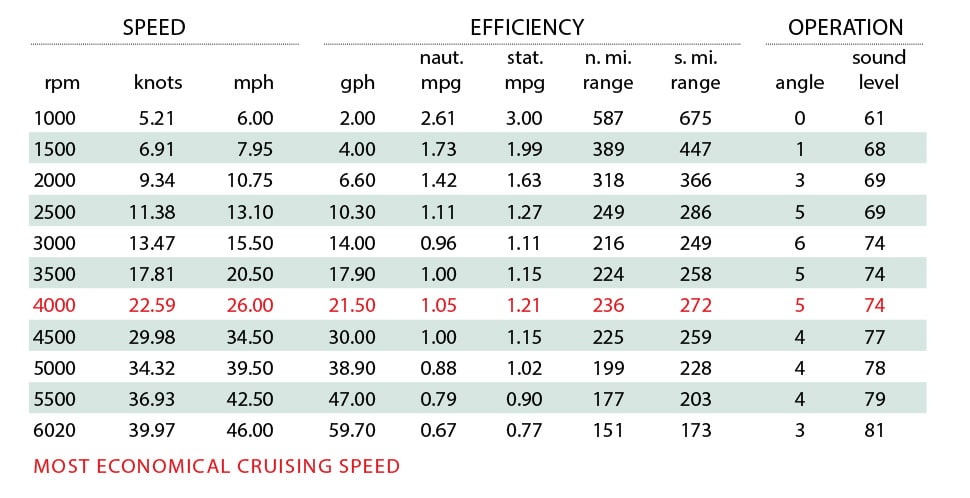
How We Tested
Engine: Twin 300 hp Mercury Verado outboards
Drive/Prop: Outboard/141/2″ x 17″
Gear Ratio: 1.85:1
Fuel Load: 200 gal.
Water on Board: 20 gal.
Crew Weight: 790 lb.
More Information: MJM Yachts – Newport, Rhode Island; 401-862-4367; mjmyachts.com

